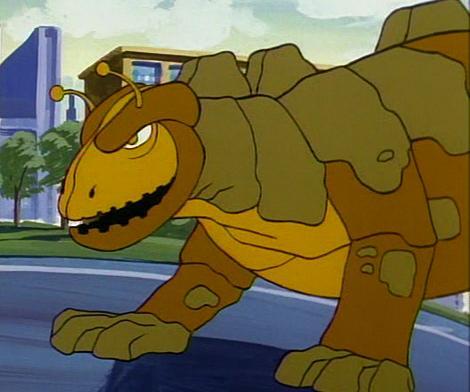No. Enc.: 1d4 (1d4)
Alignment: Chaotic
Movement: 90' (30')
Burrow: 90' (30')
Armor Class: -4
Hit Dice: 17
Attacks: 2 or 1 (trample, tail slap or sonic blast)
Damage: 8d8, 2d10 or 10d6
Save: L17
Morale: 10
Hoard Class: None
Earth Eater are immense Kaiju that live in the deepest parts of the earth, burrowing through deep rock and eating ores and certain types of stone. Earth Eaters are bulky creatures resembling a titanic ankylosaurus (perhaps its ancestral form) with two antennae sprouting from its forehead. An Earth Eater is 100 feet from head to tail. These monsters have a particular liking for processed man-made materials such as concrete, processed metal, and petroleum products, which can bring them into conflict with the surface world. Such encounters are rare, but devastating.
Earth Eaters have a sonic blast that is usable 3 times per day. It is a 100ft long, 5ft wide, cone. It inflicts 10d8 sonic damage, and characters must save vs stun or be or be stunned for 2d4 turns. If used on buildings or underground this sonic blast collapses buildings and tunnels. Any creature caught inside a collapsing cavern or structure takes 7d6 points of damage from falling debree. If opponents are not killed or driven off by its sonic blast, an earth eater will trample foes and attempt to pummel them with its huge tail club.
The only known weakness of Earth Eaters is water, which burns these creatures like acid, dealing 1d10 points of damage as the creatures flesh is turned to mud.
Mutations: Damage turning, energy beam (sonic), reflective epidermis (heat), epidermal susceptibility (water)
Setting Notes
The Alamo Empire has had recent encounters with an Earth Eater. This conflict was devastating as this particular monster, requiring focused assault by Guardian Class robots. Though the kaiju was killed, the victory was costly, destroying four Guardian robots and twenty-five Alamo Guard troops and an unknown number of slaves before the monster was put down. Additional sightings of other earth eaters are unconfirmed, but still disturbing.'




No comments:
Post a Comment